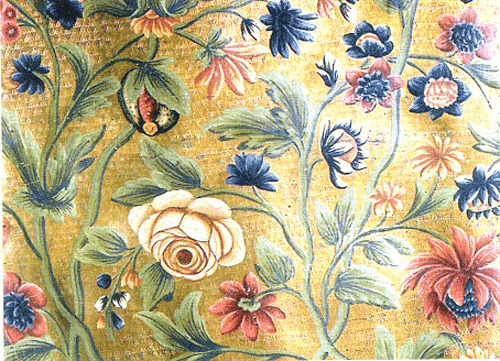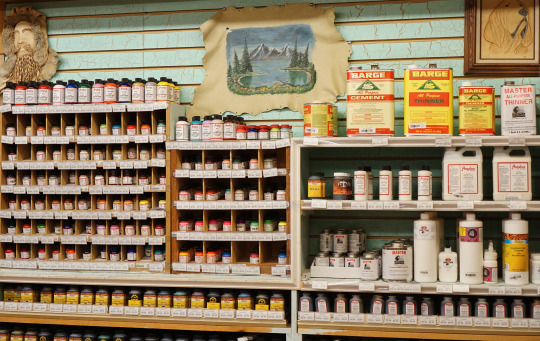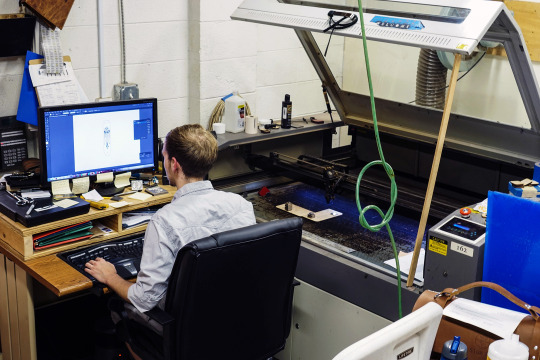Acrylic is a popular paint choice for crafters of all ilks, especially leather crafters. There are myriad ways to color leather, but none give more control or vibrance than paint. We recently received a question from a customer curious about the history of leather painting.

He asked:
Prior to acrylic paints (about 1950) how was
leather painted (other than dyeing)? And how long have these other paint
options been available? Was there a time when using a dye, either by
application to the surface or soaking the entire hide, the only option?
Well, we did a lot of research and here are the results! If you’re short on time, skip to the end. We’ve got a brief explanation for you.
Let’s begin with a brief history of leather…
The use of leather has been recorded as far back as Sumerian times with records of skins being used for dresses and headbands for women. Of course, leather had its uses among the Assyrians, ancient India, ancient Egypt and ancient Rome. Decorative leather gained prominence in the 8th century, but was taken a step further in the 12th century with improvements in tanning processes. Oil tanning was even used in conjunction with dyes to give pieces a nice look while also strengthening the material. The 14th century brought along with it a more modern way of tanning with chrome salts. The range of leather products expanded from clothing and armor to chests, books, and furniture. From the 1900s on, drum dyeing and other methods were developed to accelerate the leather tanning process and propel it into the present day. In the past it would take months, if not a full year to tan a hide. Today, the process can be completed in as little as a few days. Learn more about the basic history of leather here.
Now that that’s settled, let’s talk about paint…
For the most part, the way that leather was colored or decorated was with dyes or tanning. The ancient Egyptians were coloring some of their leathers, likely using organic materials like berries to do so. While painting certainly wasn’t the most common way of coloring leather, you may find that the tradition dates back further than you think.

18th Century Gilt leather. Courtesy of PatrickBaty.co.uk
As early as the middle ages, painting was prevalent from shields to walls, though the process was often more complicated than anything we would do today. Varnish was a common ingredient in adding color to leather. Perhaps the most luxurious paint-like method was
gilding (gilting). As far back as 1380, this method was used on hangings. These gilded hangings were an extravagant alternative to tapestries and wallpaper. The process chiefly used silver leaf, varnish and ink in an intricate process that produced opulent works of art. Gilding was also a popular way to color book spines.
In Sir Charles Lock Eastlake’s 1847 book Material for a History of Oil Painting, he describes a method for using leather as a ground for painting wood with oil paints. “Such a parchment preparation, covered with a gesso or plaster of Paris ground, is sometimes found in English tempera pictures of the fourteenth century. The darkly varnished Byzantine pictures are frequently painted on leather glued to the wood.”
Gesso, it turns out, often includes something called milk paint in the formula. Milk paint is
a natural, non-toxic, water-based paint made from a combination of milk and lime. While it can be used as a base for painting when combined with gypsum, it is also usable as paint itself.
Generally sold in powder form, this paint can be mixed for use as a stain or a finish and it works just fine on leather. It can give off a more worn affect and is a fairly permanent way of coloring things. Milk paint is said to be oldest form of paint and was even used in cave drawings.
The short and sweet answer…

Leather was painted with oil paint, milk paint and gilding. These paint options have been available for varying amounts of time, with milk paint being the oldest and pre-dating recorded leather use by thousands of years. While we have no verifiable evidence of paint being used on leather before the Middle Ages, it is very possible that leather was painted before then!





